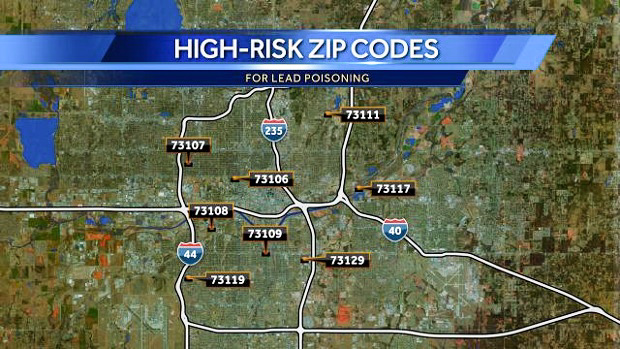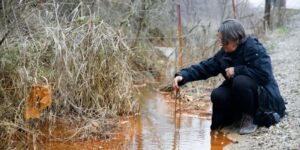Flint, Michigan is not the only place with lead poisoning problems. Oklahoma also faces a high risk of lead poisoning in 21 zip-code areas.
“I am not surprised, because our water is straight from the reservoir,” Ethan Ellis, an electrician at Oklahoma Christian’s physical plant said. “They treat it, put some chemicals in it but that’s about it, there is no huge filtration system.”
The Oklahoma Childhood Lead Poisoning Prevention Program (OCLPPP) made a list of areas with previous contamination cases – mostly older homes – all of which were in the metro area.
“I had no idea there was a risk of lead poisoning, that makes me really nervous,” sophomore Brett Deever said. “You don’t want to have lead poisoning, that’s not a good thing,”
Although the Environmental Protection Agency has set standards for safe levels of lead in drinking water, chemistry professor Howard Vogel said that the standard is still too high.
“There is no amount of lead in drinking water that is safe,” Vogel said. “Zero lead is the safe amount of lead.”
The current safe level is that if more than 10 percent of tap water samples exceed the lead action level of 15 parts-per-billion, then water systems are required to take additional measures to filter the water and rid the supply of lead.
According to Terry Johnson, Oklahoma Christian’s drinking water supply is checked frequently to ensure student safety.
“I can tell you OC’s water is clean because I have looked in that water tower and we have it tested every month,” Oklahoma Christian physical plant HVAC technician Jeff Gramling said. “Sometimes we have to make adjustments to our water levels because the EPA changes regulations every year, but we have always been approved.”
According to KOCO news, levels of lead in drinking water come from corrosion of older lead pipes that allows toxic chemicals to leak into the drinking water. However, Oklahoma has more clay pipes, plastic PVC pipes and concrete pipes than lead pipes, which reduces the possibility of high lead levels.
Vogel said copper pipes sometimes lead to copper poisoning in the water with a limit of 1.31 parts-per-million.
“Usually even just a little bit of lead can lead to cancer problems and illnesses. Although it is a little amount it may not kill everybody, but it may eventually kill everybody,” Deever said.
Exposure to lead can result in damage of the central and peripheral nervous system, learning disabilities, shorter stature, impaired hearing and impaired formation and function of blood cells in young children, according to the EPA.
Unlike in Flint, where most lead exposure is from water, Oklahoma’s biggest source of lead contamination is lead-based paint.
Vogel said that reversed osmosis filters help reduce the levels of harmful substances in drinking water.
“But making a big enough reverse osmosis filter for the whole Oklahoma water supply would be very expensive,” Vogel said. “Since with my small unit version that is placed on one faucet in my house I can only produce one gallon every two hours.”














Be First to Comment